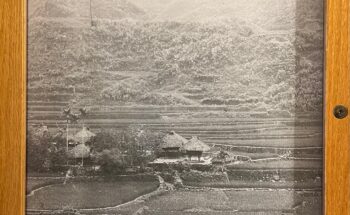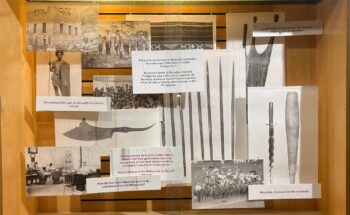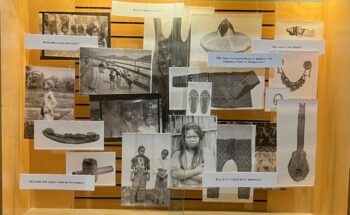Berkeley’s Orientalist Desire: Indigenism and the Colonial Fantasy
Berkeley’s Orientalist Desire: Indigenism and the Colonial Fantasy
Since the early 1900’s, UC Berkeley Filipinx students have led decolonial projects to denounce white supremacy and American Imperialism in the Philippines. For example, the student-run Philippine Review, running from 1905-1907, was the leading exponent of anti-colonial academic literature, poetry, news and short stories in the United States.
At the same time, campus faculty and administrators helped design and implement US colonization of the Philippines, which touched every aspect of Filipinx private and public life. The Hearst Museum’s Philippines collections—numbering over 5,000 objects—represent an enduring testament to Berkeley’s role in US Imperialism. They include objects donated by military personnel and colonial administrators, many taken from living people in the Philippines during the colonial period and even removed from grave sites.
This exhibit, Berkeley’s Orientalist Desire: Indigenism and the Colonial Fantasy, draws lineage from the multiple generations of Filipinx students who have sought to grapple with the continuing impact of Berkeley’s colonial legacy. With staff and faculty support at the Hearst Museum, participants in the student-led DeCal, “UC Berkeley, the Philippines and Filipinx America” contextualize the Philippines collection for the anti-racist campus.
I hope the exhibit is a learning opportunity on the prospect of empowering students to investigate and platform public history from multiple perspectives to the public benefit.
Alex Mabanta, DeCal Instructor
The cases represent a juxtaposition of narratives, colonial and decolonial. Case one displays the racial narrative constructed by the colonialist and Berkeley officials which view Filipinx culture as savage, primitive and violent. The photographs in the case show the processes of colonization, architecture of occupation, assimilation to a white society, and the devaluing of native culture. Case two aims to dispute the racist stereotyping by displaying objects and images that value the wisdom in indigenous Filipinx culture and create a humane perspective. The colonial empire had set its sight on the Philippines. Through the colonialist oriental gaze, the orient cannot represent itself, through this lens western expertise is superior.
The exhibit consists of the re-representation of stolen Filipinx objects – currently sitting in the Hearst Anthropology archives – through two-dimensional imagery, Images of the Hearst Filipinx collection are transferred onto translucent sheets, then staggered, layered and suspended within the display cases to give depth to the two dimensional representation. The translucent material generates an ethereal quality the exhibit, reminiscent of memory, history and the passing of time.
Cameron Yetta, Exhibit Designer
https://portal.hearstmuseum.berkeley.edu/?q=philippines&search_field=text
Berkeley’s Orientalist Desire: Indigenism and the Colonial Fantasy
This exhibit, Berkeley’s Orientalist Desire: Indigenism and the Colonial Fantasy, draws lineage from the multiple generations of Filipinx students who have sought to grapple with the continuing impact of Berkeley’s colonial legacy. With staff and faculty support at the Hearst Museum, participants in the student-led DeCal, “UC Berkeley, the Philippines and Filipinx America” contextualize the Philippines collection for the anti-racist campus.

Case one displays the racial narrative constructed by the colonialist and Berkeley officials which view Filipinx culture as savage, primitive and violent. The photographs in the case show the processes of colonization, architecture of occupation, assimilation to a white society, and the devaluing of native culture.

Case two aims to dispute the racist stereotyping by displaying objects and images that value the wisdom in indigenous Filipinx culture and create a humane perspective. The colonial empire had set its sight on the Philippines. Through the colonialist oriental gaze, the orient cannot represent itself, through this lens western expertise is superior.

